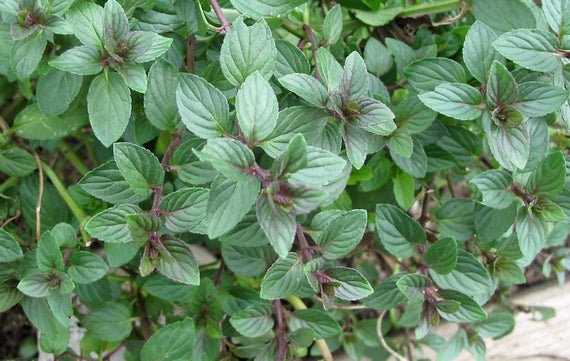Growing
Mint thrives alongside water gardens or in damp spots in the yard. Lushest growth occurs in moist soil in partial shade. Allow it room to spread.
Medicinal Properties
Crush fresh leaves into water for a refreshing beverage (like an herbal tea, aka tisane), or add to another drink like chai tea, hot chocolate, milkshake, coffee, or a mojito. You can also dry leaves for flavoring desserts, like ice cream, meringues, quick breads, or cakes.
Medicinally mint is considered a nervine , digestive, and antimicrobial. It aids digestion, eases upset stomach and cold symptoms, alleviates anxiety, and promotes restful sleep. Mint plants have also been said to repel flies, fleas, mosquitoes, ants, mice, and rats.
It also has a cooling topical effect (good in bath water or foot soaks). Overall, a good plant to have during social distancing & all summer long in Florida!
Recipes
Sun tea
1/2 cup dried or 1 cup fresh mint and 1/2 gallon water.
Place in 1/2 gallon glass jug.
Set in a sunny place 2-8 hours.
Refrigerate & enjoy!
Insect repellent spray
Boil a 1/2 cup of water with a spoonful of dried mint leaves. Adding other herbs such as Lavender or rosemary will strengthen the repellent. Cool it down for couple of hours.
After straining the mint leaves, add the mint liquid to a spray bottle. Add about a 1/2 cup of rubbing alcohol to the spray bottle.
Shake well & it is ready to use!
More information
Pharmacological & therapeutic effects of Mentha Longifolia L. and its main constituent, menthol

